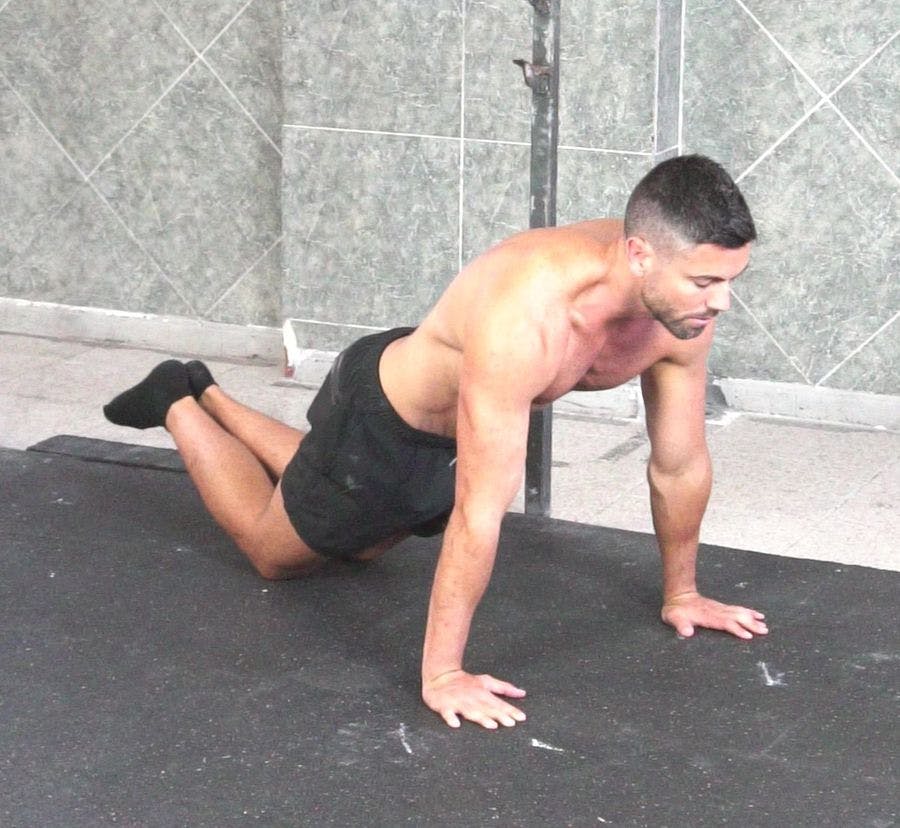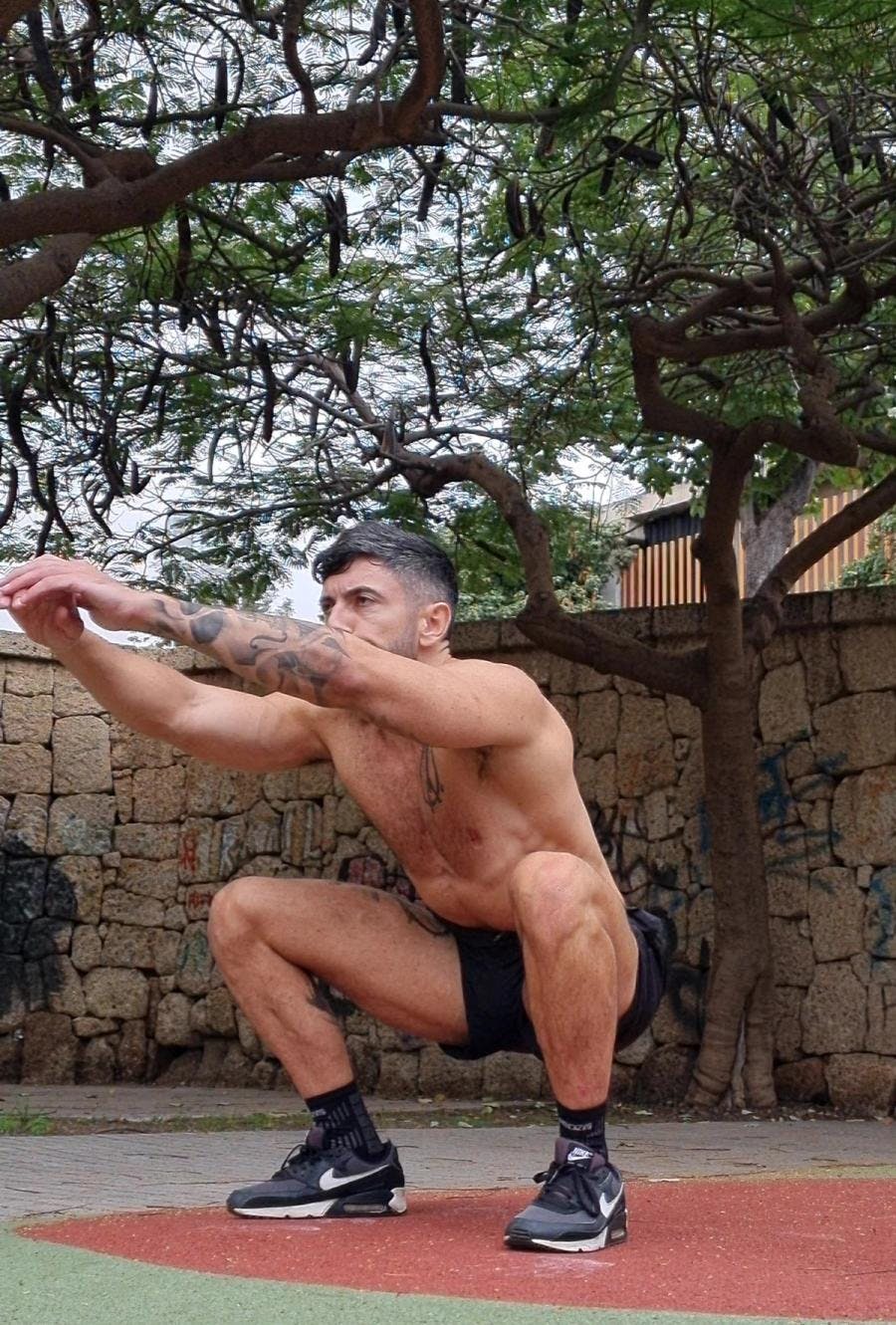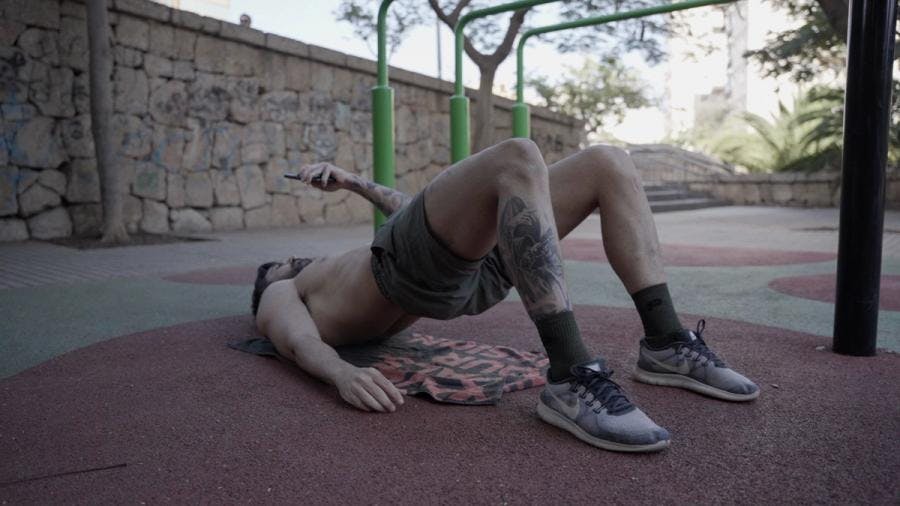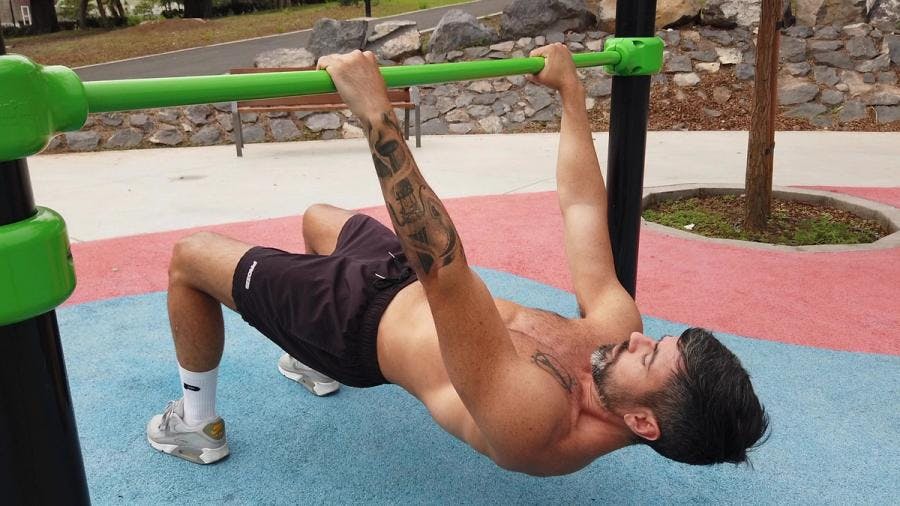
Calisthenics Exercises: What They Are and How to Start Step by Step
Calisthenics is a training discipline based on using your own body weight through characteristic and specific exercises like push-ups, pull-ups, dips on parallel bars, squats, and others—as well as more advanced skills like the muscle up, front lever, planche, handstand, and more.
It gained popularity thanks to the spectacular workouts done in outdoor bar parks, but it has the great advantage of also being trainable at home without equipment.
If you want a more in-depth and detailed definition, you can check out our article on what Calisthenics is.
In this article, I'm going to show you exercise lists, routine examples, and progressions so you can train Calisthenics at your level and with whatever equipment you have.
What Are Calisthenics Exercises?
Calisthenics exercises are based on relative strength in relation to body weight and can be done on the floor, against a wall, on bars, or with any available equipment found in an outdoor park.
The main difference from gym workouts is that in Calisthenics, you progress by using more challenging variations—whether by changing angles or levers, adding explosiveness, increasing range of motion, or learning new skills. In contrast, gym exercises typically progress by simply adding more weight to the machine.
Benefits of Doing Calisthenics Exercises
The main benefits of calisthenics are:
- Improved strength and control over your own body weight
- Train at home with no equipment or outside in a park
- Progressions for complete beginners and elite advanced athletes
- Skill development
- A solid foundation for other sports
Calisthenics Exercises for Beginners
Let’s take a look at what Calisthenics exercises to include in your routine if you’re a beginner. Some of them can be done at home, while others require bars:
Incline Push-ups: Use a bench, chair, couch, low table, or any other surface around thigh height to perform push-ups with your hands elevated. This makes them much easier. If it’s still too hard, you can increase the elevation further or do partial range of motion.

Knee Push-ups: If you don’t have a surface to do incline push-ups, you can do them with your knees on the floor. If these are still too difficult, start with a partial range of motion.

Bodyweight Squats: One of the most complete leg exercises and great for beginners. If you need help, hold onto a surface and use a partial range of motion.

Glute Bridges: Lying on your back with your knees bent, press against the floor to lift your hips until your back and thighs form a straight line.

Australian Pull-ups: Using a low bar, place your body underneath it and, with your feet on the ground, pull yourself up until your chest reaches the bar. If these are too hard, try a higher bar or use a partial range of motion. With a little creativity, you can do these at home with chairs or a table.

Isometric Chin-up Hold: On a bar, jump or use a surface to get to the top position with a supinated grip (palms facing you) and hold that static position for a set time.

Intermediate Calisthenics Exercises
These exercises are for people who already have some strength or previous experience. Again, some can be done at home without equipment, while others require bars.
Push-ups: The classic bodyweight exercise. Make sure your form is correct and you go through the full range of motion. To progress, you can add explosiveness, claps, or extended range.

Pike Push-ups: A variation of push-ups that focuses more on the vertical plane and adds shoulder work. If you want to see the technique in detail, check out this article.

Dips on Parallel Bars: Another classic basic exercise. Use a full range of motion, going down to at least 90º and locking out at the top. To advance, add explosiveness, slow negatives, or extended range.

Lunges: One of the most complete leg exercises. Try to stay upright and balanced during execution. To add difficulty, make them explosive with a jump switch.

Bulgarian Squats: Another very complete and intense leg exercise. Again, focus on control and stability. To make it harder, do them explosively and with controlled negatives.

Pull-ups: The queen of pulling exercises in Calisthenics. You can do them with a pronated or supinated grip, or alternate between the two. To make them harder, do them explosively—this will help prepare you for the muscle up.

Advanced Calisthenics Exercises
These exercises are for athletes who have been training for a while and want something more challenging and intense.
Muscle up: One of the most standout and impressive Calisthenics exercises. Try to do them as cleanly as possible and refine your technique. If you can't do them yet, check out our training program for your first Muscle up.

Bar Rows: A lesser-known but very intense pulling exercise. It demands all your horizontal pulling strength while keeping your position controlled using your abs and hip flexors.

Straight Bar Dips: If done with full range of motion and control, these are one of the best exercises for your chest and triceps.

Russian Dips: These require some technical learning but once you master them, they’re an excellent way to train your chest, triceps, and front deltoids. Here's a tutorial if you want to learn them.

Handstand Push-ups: The ultimate vertical pushing exercise in Calisthenics. To do them, you must first master the handstand. You can start with partial range of motion to make it easier.

Airborne Squat: A highly complete unilateral leg exercise where you keep the non-working leg bent and lower yourself until your knee touches the floor. The key is to perform it with great control and stability.

Pistol Squat: The most iconic unilateral leg exercise in Calisthenics. The key is to keep the non-working leg straight throughout the entire movement. If it's too difficult, try doing them with your heel elevated and holding a weight in front of you to better balance your center of gravity.

How to create Your Calisthenics Routine
To keep it simple and brief, I recommend choosing exercises you like and that suit your level from the list above. Pick between 6 to 8 in total and do 3 sets of each, with a number of reps that feels challenging—not too easy, but not pushing to complete failure either.
Do your routine 2 to 4 times a week with moderate to long rest times between sets, around 1:30 to 3 minutes depending on how hard the routine feels for you.
If you want to create a more complex Calisthenics plan, you can split your training days into push - pull - legs, or upper body - lower body, for example.
If you want a free database of pre-made routines, you can check it out here. And if you prefer a list of fully structured weekly training programs, you’ll find them here.
Tips to Progress in Calisthenics
To make progress with your routine, try gradually increasing the number of sets and reps you can do. Once you master an exercise, replace it with a harder variation.
Another great way to progress and increase intensity is to make your technique stricter with each exercise.
Always track your progress—whether it's in a notebook, an Excel spreadsheet, or using the Calisteniapp.
Lastly, pay close attention to your diet and rest so they match the intensity of your training and the goals you want to achieve.
Frequently Asked Questions About Calisthenics Exercises
Can I do calisthenics exercises without bars?
Yes, many Calisthenics exercises can be done at home without any equipment—just using the floor, a wall, or at most, a chair or medium-height surface. Exercises like push-ups and all their infinite variations, squats, lunges, other leg exercises, core exercises, and so on—all can be done without gear.
How long does it take to see results?
You often see results quickly with Calisthenics—especially in terms of strength. You’ll likely notice progress within the first few weeks.
Can you gain muscle mass with Calisthenics?
Muscle growth depends on the stimulus you give your muscles. That stimulus can come from Calisthenics, weight training, or any other form of exercise. If you train your muscles the right way, they’ll grow—no matter the method.
Start Today for Free with Calisteniapp
Download our app to access hundreds of routines, guided training programs, smart routines, and much more. Click here.
By Yerai Alonso
Autor

Yerai Alonso
Cofundador de Calisteniapp, referente en calistenia y el street workout en Español. Con más de una década de experiencia, es creador de uno de los canales de YouTube más influyentes del sector. Autor del libro La calle es tu gimnasio, campeón de Canarias y jurado en competiciones nacionales e internacionales.
Junte-se ao nosso boletim informativo
NOVOS ARTIGOS TODA SEMANA
Aprenda tudo o que precisa saber sobre calistenia
Calisteniapp
Comece a treinar calistenia e treino de rua
